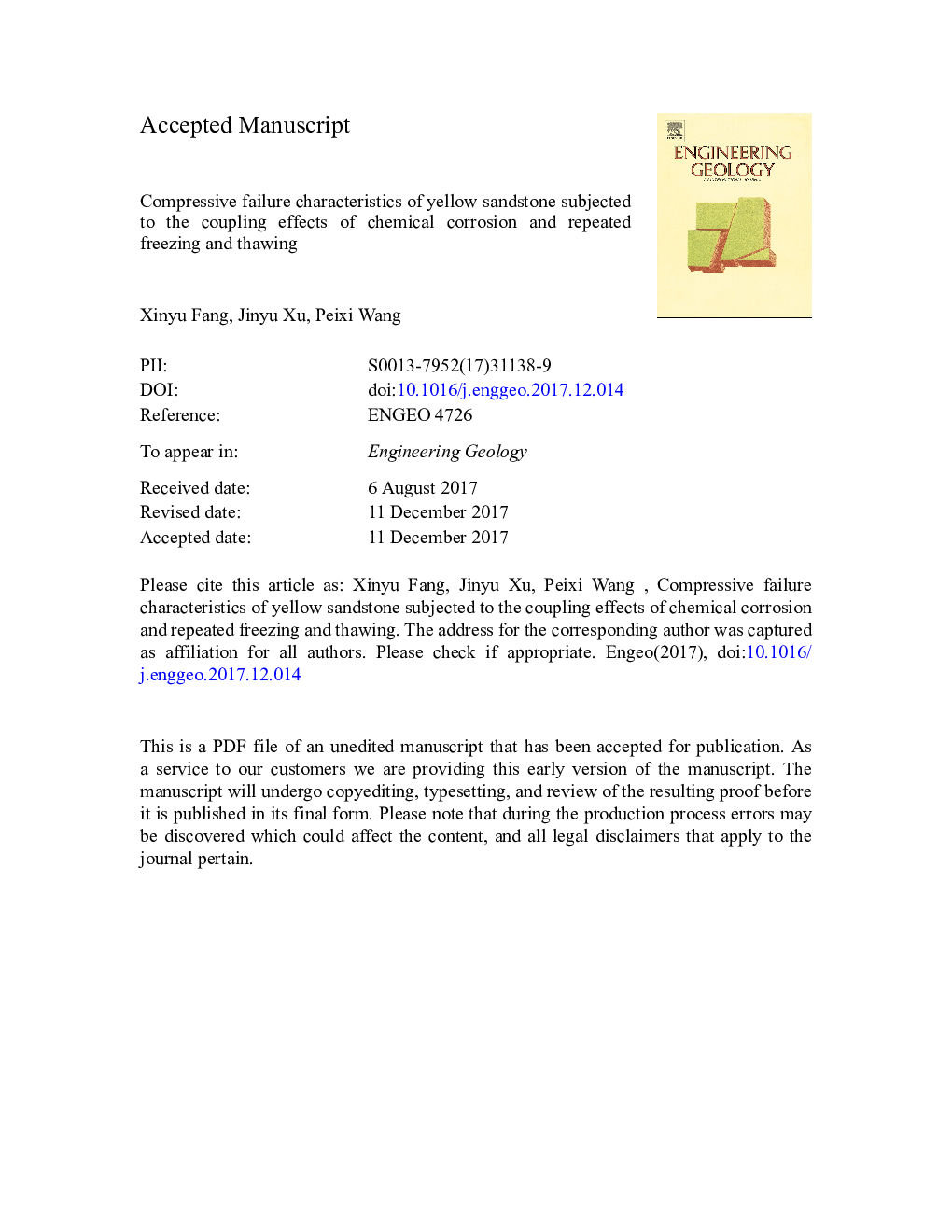| Article ID | Journal | Published Year | Pages | File Type |
|---|---|---|---|---|
| 8915981 | Engineering Geology | 2018 | 23 Pages |
Abstract
The coupling effects of chemical corrosion and freeze-thaw (F-T) cycling on the compressive failure characteristics of yellow sandstone were investigated. Results show that both chemical corrosion and minimum temperature in F-T cycles have adverse effect on the mechanical properties of yellow sandstone. With decreasing minimum F-T temperature and pH of the corrosive solution, peak stress and elastic modulus both decrease while peak strain increases, illustrating that the bearing capacity and deformation resistant capacity both decrease while ductility increases. During UCS tests, less damaged samples with a lower porosity tend to exhibit double-cone failure and contain smaller pores and more trans-grain fractures. Higher-damage samples with higher porosity tend to exhibit split failure or slope failure and contain larger pores and more inter-grain fractures. Chemical reactions between yellow sandstone and various chemical solutions are analyzed. F-T damage primarily occurs during freezing while chemical corrosion primarily occurs during thawing. Additionally, both the friction state and the internal microstructural damage influence the final failure mode. Results of this work can provide reference for the construction and development of rock structures in cold regions.
Related Topics
Physical Sciences and Engineering
Earth and Planetary Sciences
Geotechnical Engineering and Engineering Geology
Authors
Xinyu Fang, Jinyu Xu, Peixi Wang,
